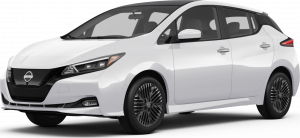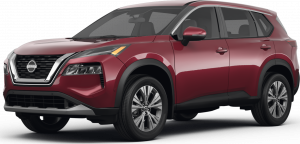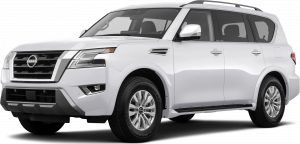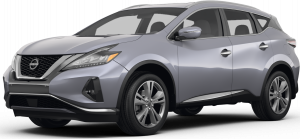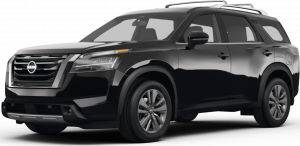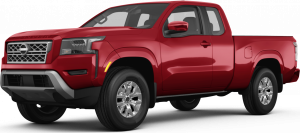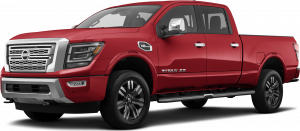Purchasing a new car in Oceanside, with its coastal charm and thriving community, is an exciting venture. However, it requires thoughtful budgeting to ensure that you can comfortably afford your new vehicle without compromising your lifestyle. Here's a comprehensive guide to help Oceanside residents navigate the financial aspects of buying a new car.
Understanding Your Financial Landscape
Before diving into car loans and payments, it's crucial to have a clear picture of your current financial situation.
- Assess Your Income: Calculate your monthly income, including any regular supplementary sources.
- Analyze Your Expenses: List your monthly expenses, such as rent, utilities, groceries, and any existing debts.
- Determine Your Disposable Income: This is the amount left after all essential expenses. It’s a key figure in determining how much you can comfortably allocate to a car payment.
Setting a Realistic Budget
Your budget for a new car should align with your financial comfort zone.
- Calculate Total Car Budget: Consider the total price you can afford for a car, not just the monthly payments. This includes the down payment, taxes, registration fees, and insurance.
- Decide on a Monthly Payment: Based on your disposable income, decide how much you can afford to pay monthly without straining your finances.
Credit Hacks for Car Buyers
- Improve Your Credit Score: Before applying for a car loan, work on boosting your credit score. Pay bills on time, reduce outstanding debts, and avoid opening new credit accounts.
- Check Your Credit Report: Obtain a free copy of your credit report and scrutinize it for errors. Dispute any inaccuracies, as these can negatively impact your credit score.
- Maintain a Healthy Credit Utilization Ratio: Aim to keep your credit utilization – the amount you owe divided by your credit limit – below 30%. This shows lenders you're not over-reliant on credit.
- Lengthen Your Credit History: Keep older credit accounts open and active. A longer credit history can positively influence your credit score, making you a more attractive borrower.
Preparing for Additional Costs
Owning a car comes with more than just a monthly payment.
- Factor in Running Costs: Include expenses like fuel, maintenance, and parking fees.
- Insurance: Research and estimate insurance costs, which can vary depending on the vehicle and your driving history.
Financing the Purchase
Understanding different financing options and their implications is crucial.
- Explore Loan Options: Compare interest rates and terms from different lenders, including banks, credit unions, and dealership financing.
- Consider Loan Terms: Longer loan terms can lower your monthly payments but might result in higher overall costs due to interest.
Maintaining Financial Flexibility
It’s important to keep your financial health intact.
- Emergency Fund: Ensure you have an emergency fund that can cover at least three to six months of living expenses.
- Lifestyle Considerations: Don’t compromise on your lifestyle necessities. Ensure your car payments allow you to maintain your current standard of living.
Tips to Find Good Loan Conditions
- Shop Around: Don't settle for the first loan offer. Compare rates and terms from multiple lenders, including banks, credit unions, and online lenders.
- Read the Fine Print: Carefully review loan terms for hidden fees, prepayment penalties, and the flexibility of payment options.
- Negotiate: Use offers from other lenders as leverage to negotiate better terms with the lender you prefer.
- Consider Shorter Loan Terms: While longer terms reduce monthly payments, they often come with higher interest rates. Shorter loan terms typically offer better conditions.
Savings Strategy for a Car Down Payment
Set a Savings Goal
- Research Car Prices: Start by researching the average price of the car you're interested in. Check online car listings, dealerships, and consumer reports to get a good understanding of the market value.
- Consider Your Budget: Evaluate your overall financial situation and determine how much you can comfortably save each month. Consider your income, expenses, and existing debt obligations.
- Determine Down Payment Percentage: Aim for at least 20% of the car's purchase price as your down payment. A larger down payment will reduce the loan amount, lower interest payments, and potentially secure better loan terms.
- Calculate Savings Timeline: Based on your monthly savings capacity, calculate how long it will take to reach your down payment goal. Adjust your savings plan accordingly if necessary.
Create a Budget and Track Expenses
- Gather Financial Information: Gather all your financial documents, including bank statements, pay stubs, and credit card statements, to get a clear picture of your income and expenses.
- Categorize Expenses: Categorize your expenses into essential and non-essential categories. Essential expenses include housing, food, utilities, and transportation. Non-essential expenses include entertainment, dining out, and shopping.
- Identify Spending Areas: Analyze your expenses and identify areas where you can cut back. Consider reducing dining out, entertainment costs, or subscription services.
- Create a Monthly Budget: Create a detailed monthly budget that outlines your income and expenses. Allocate a specific amount for car savings and stick to the plan.
- Track Expenses Regularly: Regularly track your expenses to ensure you're staying within your budget and making progress towards your down payment goal.
Automate Savings
- Set Up Automatic Transfers: Schedule automatic transfers from your checking account to a dedicated savings account. This will ensure consistent saving and prevent impulse spending.
- Choose the Right Transfer Frequency: Determine the frequency of automatic transfers that suits your financial situation. Consider weekly, bi-weekly, or monthly transfers.
- Adjust Transfer Amount: Review your budget periodically and adjust the transfer amount if your income or expenses change.
- Seek Bank Assistance: Contact your bank or credit union for assistance in setting up automatic transfers. They can guide you through the process and ensure it aligns with your savings goals.
Tips on How to Get a Low Rate on a Car Loan
- Boost Your Credit Score: A higher credit score qualifies you for lower interest rates. Take steps to improve your credit score before applying for a car loan.
- Make a Larger Down Payment: Putting down a larger amount upfront can reduce the loan amount, leading to lower interest rates and better loan terms.
- Opt for a Newer Model Car: Loans for newer model cars often come with lower interest rates compared to older models.
- Pre-Approval: Getting pre-approved for a loan can give you an idea of the interest rates you qualify for and strengthens your negotiating position at the dealership.
Consider Additional Income Sources
- Explore Side Hustles: Look for opportunities to supplement your income through side hustles, such as freelancing, part-time jobs, or online gigs.
- Utilize Skills and Talents: Leverage your skills and talents to generate additional income. Consider teaching online courses, offering freelance services, or selling handmade crafts.








